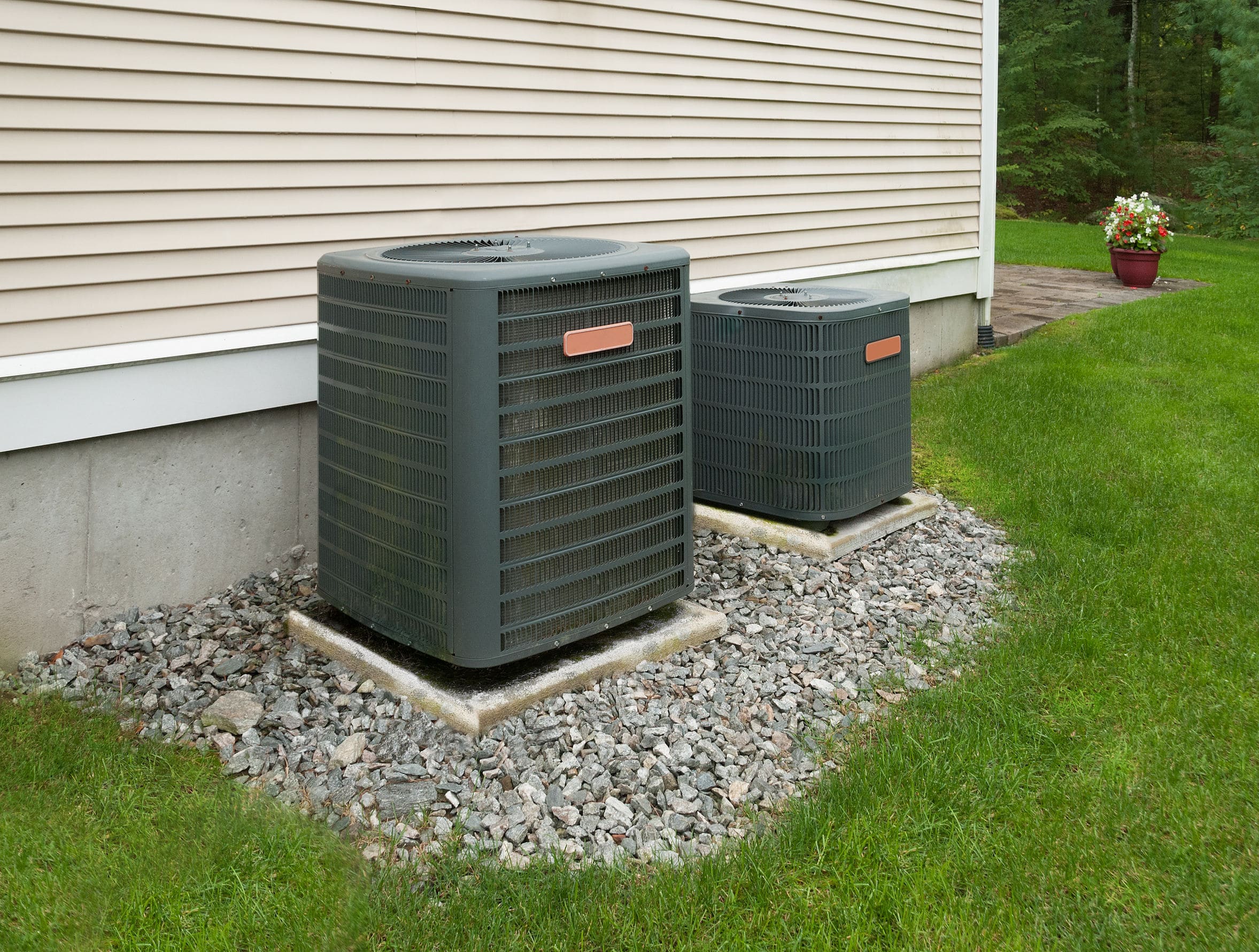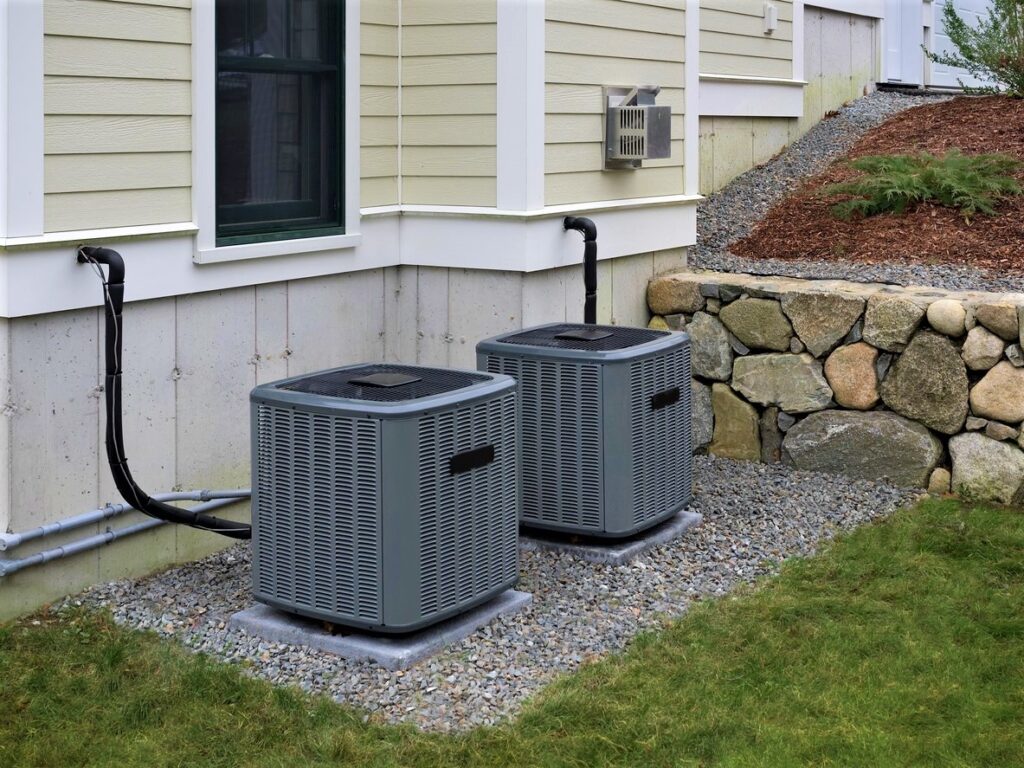Embark on a journey exploring how outdoor AC units can seamlessly blend with your exterior design, adding both functionality and style to your property. From selecting the right style to color coordination and placement, discover the key elements that elevate your outdoor space.
Selecting the Right Style
When choosing an outdoor AC unit to complement your exterior design, it's essential to consider different styles that can enhance the overall aesthetics of your property. Whether you have a modern, traditional, or minimalist architectural style, selecting the right AC unit can make a significant impact on the visual appeal of your home.
Modern Style
For homes with a modern architectural style, sleek and contemporary outdoor AC units are ideal. Opt for units with clean lines, minimalistic designs, and neutral colors to blend seamlessly with the modern aesthetic of the property. A stainless steel or matte black finish can add a touch of sophistication to the exterior design.
Traditional Style
If your home features a traditional architectural style, consider outdoor AC units that have a more classic and timeless look. Units with decorative panels, scrollwork, or a faux stone finish can complement the traditional charm of the property. Choose colors like bronze or beige to match the warm tones often found in traditional homes.
Minimalist Style
For properties with a minimalist architectural style, opt for outdoor AC units that are simple and understated. Look for units with a monochromatic color scheme, clean design, and slim profile to maintain the minimalistic look of the exterior. White or light gray units can seamlessly blend in with the clean lines and simplicity of minimalist designs.It's crucial to select an outdoor AC unit that not only provides efficient cooling but also harmonizes with the overall exterior design of your home.
By choosing a style that complements the architectural features and color palette of your property, you can create a cohesive and visually appealing look that enhances the curb appeal of your home.
Material Choices

When selecting an outdoor AC unit that complements your exterior design, the choice of materials plays a crucial role in both aesthetics and functionality. Different materials offer various visual appeals, durability levels, and maintenance requirements that can influence your decision.
Stainless Steel
Stainless steel is a popular choice for outdoor AC units due to its sleek and modern appearance. It is resistant to rust and corrosion, making it a durable option for exterior settings. However, stainless steel may show fingerprints and require regular cleaning to maintain its polished look.
Wood
Wooden outdoor AC units can add a natural and rustic charm to your exterior design. Wood blends well with outdoor surroundings and can be customized to match your home's aesthetic. However, wood requires more maintenance than other materials, as it is susceptible to rot, warping, and insect damage.
Colored Metal
Colored metal outdoor AC units offer a wide range of design possibilities, allowing you to match or contrast with your home's color scheme. Metal is durable and requires minimal maintenance, making it a practical choice for outdoor use. However, colored metal finishes may fade over time due to exposure to sunlight and weather conditions.
Color Coordination
When it comes to outdoor AC units, color coordination plays a crucial role in enhancing the overall aesthetic appeal of a building. Matching or contrasting the colors effectively can make a significant difference in the visual impact of the unit and how well it integrates with the exterior design.
The Significance of Color Coordination
Color coordination between the AC unit and the building's exterior is important as it helps create a cohesive and harmonious look. When the colors complement each other, the unit can blend seamlessly into the surroundings, making it less obtrusive and more visually pleasing.
Tips for Matching or Contrasting Colors
- Consider the existing color scheme of the building and choose a color for the AC unit that either matches or contrasts with it in a balanced way.
- Use color swatches or samples to compare different shades and see how they look against the building's facade.
- Take into account the surrounding landscape and architectural elements to ensure the color choice enhances the overall aesthetic of the property.
- Experiment with different color combinations to find the one that best suits the style and design of the building.
Role of Color Psychology
Color psychology plays a significant role in creating harmony between the AC unit and its surroundings. By choosing colors that evoke certain emotions or feelings, you can create a more welcoming and visually appealing environment. For example, calming blues and greens can create a sense of tranquility, while bold reds or yellows can add a pop of energy and vibrancy to the outdoor space.
Placement and Integration

When it comes to outdoor AC units, strategic placement and seamless integration are key to enhancing the overall design of your property. By thoughtfully considering the location and appearance of the unit, you can ensure that it complements your exterior design rather than detracts from it.
Strategic Placement
One way to strategically place your outdoor AC unit is to consider the natural flow of your outdoor space. Avoid placing it in high-traffic areas or directly in the line of sight from key vantage points. Instead, look for a discreet location that still allows for proper airflow and maintenance access.
Seamless Integration
Integrating the AC unit seamlessly into the landscape or architecture of your property can involve clever design solutions. Consider using decorative screens, trellises, or plantings to conceal the unit while still allowing for airflow. You can also match the color or texture of the unit to existing elements in your outdoor space for a cohesive look.
Creative Solutions
One creative solution for concealing or incorporating the AC unit is to build a custom enclosure that doubles as a functional piece of furniture or outdoor feature. For example, a bench with a slatted back that allows for ventilation can discreetly house the unit while providing seating in your outdoor space.
Final Conclusion

In conclusion, harmonizing your outdoor AC unit with your exterior design not only enhances the visual appeal but also adds a touch of sophistication to your property. By carefully considering style, materials, colors, and placement, you can create a cohesive and inviting outdoor space that reflects your unique taste and personality.
FAQ Guide
How important is the style of the outdoor AC unit in complementing the exterior design?
The style of the outdoor AC unit plays a crucial role in enhancing the overall aesthetic appeal of the property. Choosing a style that complements the architecture can elevate the visual impact.
What are some common materials used in outdoor AC units that complement exterior designs?
Materials such as stainless steel, wood, and colored metal are popular choices for outdoor AC units as they blend well with various exterior design styles.
Why is color coordination between the AC unit and the exterior of the building important?
Color coordination ensures a harmonious look and feel, creating a cohesive design that enhances the overall appearance of the property.
How can outdoor AC units be strategically placed to enhance the overall design?
Strategic placement involves considering factors like visibility, airflow, and aesthetics to seamlessly integrate the AC unit into the outdoor space while maintaining functionality.



